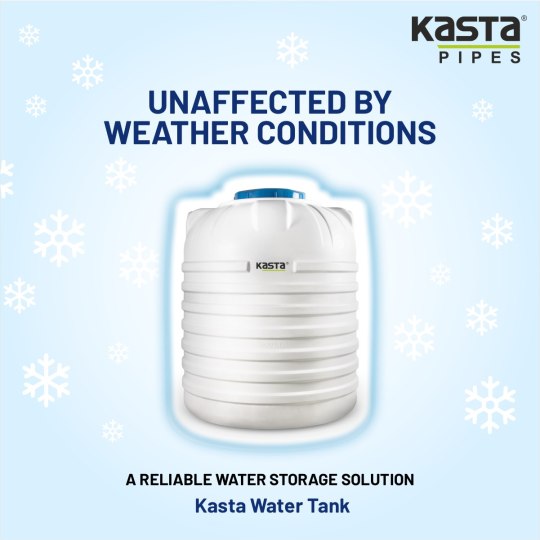#Micro Sprinkler
Text
Micro Sprinkler | Smart Irrigation
Discover Efficiency of Irrigation with DFShou Micro Sprinkler!

Transform your gardening game with the DFShou micro sprinkler - the ultimate solution for precise and effective irrigation.
Save time and water while promoting healthy plant growth. Elevate your garden with DFShou!
0 notes
Text
What Is a Micro Irrigation System?
As homeowners strive to enhance their landscape irrigation practices while prioritizing water conservation, micro irrigation systems and drip lines have gained significant popularity. These systems, designed to reduce landscape overwatering, offer a low-pressure, low-flow-rate solution. A drip line efficiently soaks the soil around plants, delivering water and nutrients directly to the root zone rather than just the soil surface. Homeowners can maintain a vibrant, lush landscape by implementing micro or drip irrigation while significantly reducing water consumption. Today we discuss the functionality of micro irrigation and drip line systems and the benefits of integrating them into your landscape.

How Does A Micro Irrigation System Work?
Micro irrigation systems work by running water through low-pressure, flexible tubing that runs across a landscape. Instead of delivering water to a big area, the irrigation system directly provides water to the root zone of plants or other relatively small areas. The water is delivered more slowly and over a longer time than other irrigation methods. Micro irrigation systems can have numerous benefits over conventional sprinkler systems by emphasizing efficiency, allowing homeowners to manage their landscape’s water usage more easily.
Benefits of a Micro Irrigation System
The most apparent benefit of a micro irrigation system is more efficient water usage. The system targets the plant’s root zone, providing plants with sufficient water while using less water overall. The micro irrigation process allows the water delivered to reach plant roots more efficiently. Drip irrigation prevents water runoff and minimizes evaporation by providing water directly to the root zone. Overall, you will save money by reducing your water usage and making better use of your available water.
Micro irrigation also comes with a host of other benefits. For example, the bare areas of soil or mulch between plants receive far less water, which reduces the chance of weed growth. Another reassuring benefit of micro irrigation systems is their versatility and effectiveness in different landscapes. A drip system can work on sloping, hilly landscapes just as well as flat, even landscapes. These systems are especially useful at watering plants spaced widely apart, such as trees or flower beds.
Why You Should Get a Drip Line
Drip irrigation systems provide accurate watering solutions. By fine-tuning the flow rates and the positioning of the emitters, you can customize the watering to meet each plant’s unique requirements, encouraging robust growth and flourishing blooms. Additionally, drip systems conserve vital natural resources and protect your local ecosystems by reducing water usage and limiting runoff.
Maintaining a Drip Line
Once installed, micro irrigation systems and drip lines require minimal upkeep and can be easily automated with timers. The automated watering schedules ensure that your plants remain adequately hydrated and healthy, even when you are away, eliminating the worry of returning to wilted greenery. The simplicity of maintenance is one of the many advantages of these systems, making them a practical choice for homeowners.
Adding Micro Irrigation to Your Landscape
One of the critical advantages of micro irrigation systems and drip lines is their versatility. These systems can be incorporated into your landscape, regardless of your current irrigation system or plant life. For instance, we can install drip irrigation systems into new plots of land or add them to existing irrigation and sprinkler systems. This means you can have spray sprinklers to irrigate your lawn while drip emitters supply water slowly to your trees and flower beds. This setup allows you to enjoy the benefits of reduced water costs, full coverage, and proper plant watering, regardless of your landscape’s layout.
Contact Burkholder Brothers for Your Irrigation Needs
If you want more information on how to benefit from a micro irrigation system or a sprinkler and irrigation company, contact Burkholder Brothers. Our Sir Sprinkler irrigation systems have been trusted in Main Line landscapes for many years. Our highly experienced and certified technicians will install an irrigation system that protects your landscape, maintains your plants’ health, and saves water, time, and money. For more information about our irrigation services, contact us today.
Blog is originally published at: https://www.burkholderlandscape.com/what-is-a-micro-irrigation-system/
It is republished with the permission from the author.
0 notes
Text

#KastaColumnPipe is your top choice for borewell application... it gives greater flow due to its smooth internal surface and helps bring prosperity in the fields and lives of farmers!
_ https://kritiindustries.com
#Kriti industries#Kasta pipes#Kasta pipes & fittings#Kasta water tank#Pvc pipe#Sprinkler pipes#Micro-irrigation pipes#Rpvc pipes#Column pipes#Drip irrigation pipes#Suction pipes#Garden pipes#Cpvc pipes#Upvc pipes#Drainage rpvc pipes#Hdpe Pipes#Borewell casing pipes#plastic pipe manufacture
0 notes
Text
YR9822A 4 way micro atomizing sprinkler head
Specifications: DN7mm
Work pressure: 1.0-3.0 bar
Flow rate: 0.02-0.03m³/h
Spray radius: 0.5-0.9m

0 notes
Text
How do you properly install and maintain micro sprinklers to ensure optimal performance?
Proper installation and maintenance of micro sprinklers are essential to ensure their optimal performance.
Here are some guidelines to follow:
Installation:
Plan the System Layout: Determine the desired coverage area and water distribution pattern. Consider factors such as plant spacing, water requirements, and soil conditions when designing the layout.
Select the Right Sprinklers: Choose micro sprinklers that are suitable for your specific application, taking into account factors such as flow rate, operating pressure, spray pattern, and coverage area. Ensure compatibility between the sprinklers, mainline, and other system components.
Prepare the Water Supply: Install a filtration system to remove debris and particles that could clog the micro sprinklers. A pressure regulator may also be necessary to maintain the recommended operating pressure.
Install the Mainline: Lay the mainline pipe along the desired irrigation area, ensuring proper alignment and slope for water flow. Connect the mainline to a reliable water source, such as a well or municipal water supply.
Install the Micro Sprinklers: Position the micro sprinklers at the appropriate locations within the coverage area. Follow the manufacturer's instructions for spacing and height recommendations. Secure the micro sprinklers using stakes, risers, or other mounting methods.
Test the System: Before burying or covering the pipes, test the system for leaks, proper operation, and uniform water distribution. Adjust the positioning, spray patterns, or flow rates of the micro sprinklers as needed.
Maintenance:
Regular Inspections: Periodically inspect the micro sprinklers for clogs, damage, or misalignment. Clear any debris or sediment that may accumulate in the sprinkler heads or nozzles.
Check Water Pressure: Monitor the water pressure in the system to ensure it remains within the recommended operating range. Adjust or replace pressure regulators as needed.
Clean Filters: Clean or replace the filtration system regularly to prevent clogging and maintain optimal water flow to the micro sprinklers.
Adjust and Maintain Coverage: As plants grow or landscape changes, adjust the position and height of the micro sprinklers to ensure proper coverage and avoid overspray or underspray.
Winterization: In regions with freezing temperatures, properly winterize the micro sprinkler system to prevent damage. This may involve draining the water from the system, insulating exposed pipes, or using antifreeze solutions.
Periodic System Flushing: Flush the system periodically to remove any buildup of sediment or mineral deposits that could affect sprinkler performance.
Keep Surrounding Areas Clear: Maintain a clear area around the micro sprinklers to prevent obstructions or interference with their operation. Trim vegetation or remove debris that may obstruct the spray pattern.
By following these installation and maintenance practices, you can ensure optimal performance and longevity of your micro sprinkler system. Additionally, refer to the manufacturer's guidelines and recommendations for specific maintenance requirements and any additional considerations related to your micro sprinkler model.
How do you determine the appropriate spacing and layout for micro sprinklers in an irrigation system?
Determining the appropriate spacing and layout for micro sprinklers in an irrigation system involves considering several factors.
Here are some guidelines to help you:
Watering Requirements: Understand the watering needs of the plants or crops you are irrigating. Consider factors such as their water consumption rate, root spread, and growth stage. Different plants may have varying water requirements, influencing the spacing and layout of the micro sprinklers.
Sprinkler Performance: Refer to the manufacturer's specifications for the specific micro sprinklers you are using. china micro sprinkler They typically provide information on the recommended coverage area, spray pattern, and throw distance. This information helps determine the spacing between sprinklers.
Area Shape and Size: Consider the shape and size of the irrigation area. For rectangular or square areas, a grid pattern with evenly spaced micro sprinklers may be appropriate. In irregularly shaped areas, adjust the spacing to ensure full coverage.
Overlapping Coverage: Ensure that the spray patterns of adjacent micro sprinklers overlap slightly to achieve uniform coverage. This prevents dry spots and ensures that all plants receive adequate water. The degree of overlap depends on the specific sprinkler's spray pattern and throw distance.
Water Distribution Uniformity: Aim for high water distribution uniformity across the irrigated area. This means that each plant receives a relatively consistent amount of water. Adjust the spacing and layout of micro sprinklers to achieve a more uniform distribution, considering factors such as wind, slope, and soil type.
Flow Rate and Pressure: Consider the flow rate and operating pressure of your micro sprinklers. Higher flow rates may require wider spacing between sprinklers to ensure sufficient water distribution without oversaturation.
Soil Infiltration Rate: Understand the infiltration rate of the soil in your irrigated area. If the soil has a slower infiltration rate, closer spacing between micro sprinklers may be necessary to prevent runoff and ensure adequate water penetration.
Plant Growth and Development: Account for future plant growth when determining the spacing and layout of micro sprinklers. Leave enough space between sprinklers to accommodate plant expansion and prevent interference with the spray pattern.
Efficiency and Water Conservation: Optimize the spacing and layout to maximize water efficiency and minimize water waste. Avoid excessive overlap or overspray, as well as large gaps between sprinklers that result in dry areas.
Consideration of Obstacles: Take into account any physical obstacles such as trees, structures, or landscape features that may affect the placement and coverage of micro sprinklers. Adjust the layout accordingly to ensure complete coverage.
It's important to note that the specific spacing and layout requirements may vary based on the type of plants, soil conditions, micro sprinkler model, and local climate. Consulting with irrigation professionals or referring to industry guidelines can provide more specific recommendations for your particular irrigation system.

0 notes
Text
THOUGHTS WHILE WATCHING GILMORE GIRLS: S3/EP5/8 O Clock At The Oasis
Ah, I'm only two episodes away from the Dance Marathon. I am PUMPED! I hope Shane is living out her bucket list (or should I say Fucket List) because the clock is ticking for her.
Original Air Date: October 22nd, 2002.
The episode opens with a pretty unfunny comedic exchange between Lorelai and Rory as they head to Luke's. They arrive to find the diner unusually crowded.

An Iconic line.
Welcome back, Tomatos Sign.
Sun Shine. Coffee's Fine.
(A Gilmore Girls Haiku)

Maybe Lorelai should have thrown some condoms at these people too. Condoms for The Hollow is my new initiave.
Luke is complaining that the parent group comes in every weekend and takes up space for hours and make a mess out of his business only to order two iced teas; he is telling this to Lorelai and Rory, who take up space for hours, eat him out of house and home and never pay for their food.

Says Luke Danes about a woman breastfeeding meanwhile he doesn't try to stop this:


Another banger of a one liner.



Later, Emily calls Lorelai at work and invites her to a furniture auction. The conversation is suspiciously pleasant and Lorelai hardly even puts up a fight. She later attends the auction with Michel and has a nice time and meets Jon Hamm. But Emily Gilmore always has some kind of motive. Stay vigilant, Lorelai.
Michel overhears the conversation and begs Lorelai to take him with her and she agrees. For a price.

I looked up a phone number for you, Michel.

Next scene, Lorelai meets a quirky, vertically challenged, talkative new neighbor who asks Lorelai to water his lawn while he's away and although her agreeance is once again reluctant, there is very little quibbling. Who is this doormat who is saying yes to everything without a fight (so basically, Rory), and what have you done with our Lorelai?

No, I will not. I will continue to post Crap Commentaries to Tumblr. Com until Tumblr finally, mercifully ends up in the dustbin of internet history. Or until I finish Season 3 (maybe 4). Whichever comes first.
My 73 year old mom loves loves loves loves loves LOVES Jon Hamm. She definitely loves Jon Hamm more than I love Milo. So of course I've shared this episode with her a few times.

My mom gives Jon Hamm the same googly eyes whenever he's on TV.
Here's some Random-Hamm Shots I sent to my mom this morning.



Jon Hamm is a babe. Let's all give it up for my mom. She has good taste.
The urge to call him "Baby Jon Hamm" when he was actually 31 years old here is strong. I mean, I still call 30 year old Milo Baby Milo. He didn't shed Baby until at he was at least 35. It's a badge of honor. These fine men age like wine.
Lorelai doesn't get BabyHamm's name at the auction, so now she's on a quest to figure it out, which unfortunately for her means she'll have to put the squeeze on Emily to try and get it. Whoops. My bad. She actually asks Rory to do it for her (then gets mildly irritated when Rory actually does it).
Just a quick run down of all the manipulative micro transactions going on in just the first 17 minutes of this episode:
Luke ---> Lorelai: Tell that woman to stop breastfeeding in my diner
Lorelai ---- > Michel: You can come to the auction if you work every weekend
Lorelai ----> Rory: You have to ask Grandma to get me BabyHamm's number
Dwight (new neighbor) ----> Lorelai: I know you just met me but I need you to water my lawn for the next week
Dwight ----> Lorelai: While you're here watering my lawn you can water my indoor plants too
Then there's the whole sprinkler business... which we'll get to in time.
Lorelai swallows her pride at the next FND and inquires about Paddle #17 and we find out BabyHamm's name is Peyton Sanders. Isn't he a football player? (Peyton Manning. Bad Joke.). Emily agrees to obtain his phone number for Lorelai without anything more than some light teasing . Highly suspicious.


Dwight's house is pretty rad.

Okay okay I LOVE this kind of thing. The thing being: listing all of the board games whose names I can make out. Les go. We'll finish out the post here. Some of the games, I'd assume for copyright reasons have their names cropped short or changed. Hungry Hungry Hippos became Hungry Hungry Nippos.

Candyland (two copies). Chess (three copies). Chinese Checkers. Hungry Hungry Nippos. Yahtzee (two copies). Ouija Board. Scattegories. Sorry. Chutes and Ladders. Easy Money. Clue. Hangman. Pyramid (two copies). Risk. Aggravation. Horse Around. Mastermind. Scrabble. Go For It. Times to Remember. Charades for Dummies. Monopoly. And FIVE copies of Operation.
I’m such a slut for small details, ya’ll 🤤
#8OCATO#gilmore girls#denise rewatches gilmore girls#rory gilmore#lorelai gilmore#luke danes#gilmore girls season 3#Hungry Hungry Nippos#jess mariano#jess mariano is somehow scared of a pair of breasts#but he was feeling up Shane's before school in the alley by the dumpsters#Jon Hamm
23 notes
·
View notes
Text
0 notes
Text
Drip, Drop, Grow: India's Micro-Irrigation Revolution!
Parched lands and thirsty crops? Not in the future India envisions! Mordor Intelligence predicts a whopping 11.1% growth for India's micro-irrigation market, reaching a cool USD 1.08 billion by 2029! So, what's this micro-irrigation buzz all about?
Making Every Drop Count:
Micro-irrigation systems deliver water directly to plant roots, minimizing waste and maximizing efficiency. This is a game-changer for India, a country facing water scarcity in many regions.
Why the Growth Surge?
Rain, Rain, Go Away? Unreliable rainfall patterns are pushing farmers towards dependable irrigation solutions.
Water Warriors: Government support and initiatives promoting water conservation are fueling micro-irrigation adoption.
Sprinkler Power: Sprinkler and drip irrigation are leading the micro-irrigation charge, offering efficient water usage for various crops.
State of the Art: Advancements in technology are making micro-irrigation systems even more precise and user-friendly.
A Brighter Future for Indian Agriculture:
Micro-irrigation not only saves water but also:
Boosts Crop Yields: Healthy plants, happy farmers!
Reduces Labor Needs: Simplified irrigation systems save time and effort.
Promotes Sustainability: Efficient water use benefits both agriculture and the environment.
#India Micro Irrigation Systems Market#India Micro Irrigation Systems Industry#India Micro Irrigation Systems Market Size#India Micro Irrigation Systems Market Share#India Micro Irrigation Systems Market Analysis#India Micro Irrigation Systems Market Trends
0 notes
Text
The Ultimate Guide to Choosing Water Filters for Agriculture in Gujarat
Water is the lifeblood of agriculture, especially in Gujarat, where irrigation plays a crucial role in crop success. Clean, debris-free water is vital for healthy crops and efficient irrigation systems. This guide provides a comprehensive overview of selecting the best water filters for your agricultural needs, from understanding filtration systems to identifying the top water filter manufacturers company in Gujarat.
Why Water Filters Are Essential for Gujarat's Farmers

Gujarat’s agricultural success relies heavily on effective irrigation systems. However, irrigation water often contains contaminants such as debris, sediments, and microorganisms, which can clog systems and harm crops. Here’s why the right water filter is crucial for Gujarat farmers:
Protecting Irrigation Systems: Sediments and debris can block irrigation nozzles, reducing water flow and causing system failures. Dealing with these issues can be both costly and time-consuming.
Healthy Crops: Contaminated water can harm crops and reduce yields. A proper filtration system ensures your crops receive clean, safe water.
Optimizing Water Use: By filtering out impurities, you can improve water quality and use it more efficiently, maximizing crop growth and minimizing water waste.
How to Choose the Right Agricultural Water Filter

Selecting the right water filter for your farm involves considering factors like the type of irrigation system you use, your water source, and your crops' specific needs. The best filter will ensure smooth system operation without blockages and provide your crops with the clean water they need.
1. Understanding Your Water Source for Optimal Filtration
Knowing your water source is essential in choosing the correct filter, as different sources have varying impurities:
Surface Water (Lakes, Rivers, Canals): Often contains organic debris, algae, and sediments. Disc filters and gravel filters are ideal for handling these impurities.
Groundwater (Wells): Typically contains sand and fine particles. Screen filters and disc filters are effective in removing these contaminants.
Recycled Water: May contain microorganisms and chemical pollutants, requiring a combination of filtration and disinfection systems.
2. Matching Filters to Your Crop Type and Irrigation System
Your choice of filter also depends on your crops and the irrigation system you use:
Drip Irrigation Systems: Prone to clogging, so using disc filters or screen filters is crucial to prevent debris from blocking the system.
Sprinkler Systems: Require clean water; a combination of gravel and disc filters ensures no large particles enter the system.
Micro-Irrigation: Needs high-efficiency filters like the 2-inch PP Disc Filter or 90mm Disc Filter to handle small particles that could clog narrow tubes.
3. Choosing the Best Filtration Type for Your Farm’s Needs
Different types of filters have unique benefits. Here’s a breakdown of the most common types used in agriculture:
Disc Filters: Use grooved discs to trap particles and are effective for filtering organic and inorganic materials. Popular options include the 2-inch PP Disc Filter and the 90mm Disc Filter.
Screen Filters: Use a mesh screen to catch debris. They are easy to clean and ideal for farms using groundwater with minimal debris.
Gravel Filters: Suitable for large-scale operations dealing with heavy debris and sediments. Robust and can handle high-flow systems.
Combination Filters: Some farms may need a mix of disc, screen, and gravel filters for optimal performance, especially with multiple water sources.
Top Water Filters from Leading Manufacturers in Gujarat

To assist you in making an informed choice, here are some top water filter products that are effective for agriculture in Gujarat:
1. 2 Inch PP Disc Filter: Ideal for Small to Medium Farms
Best for drip or micro-irrigation systems.
Traps fine particles efficiently and can handle high water flow without clogging.
A top choice among Gujarat’s water filter manufacturers due to its durability and effectiveness.
2. 90mm Disc Filter: Perfect for High Flow Irrigation Systems
Suitable for large irrigation systems with high water flow requirements.
Its 90mm size allows it to handle larger water volumes, making it ideal for extensive farming needs.
A popular option among irrigation filter suppliers in Gujarat.
3. PP Screen Filter: Best for Groundwater Filtration
Ideal for farmers using groundwater or well water.
Easy to clean and maintain, effectively removing sand and small particles.
4. Gravel Filters with BW Assembly: For Heavy Debris Management
A robust solution for water sources with significant sediment or debris.
Built to withstand the demands of large-scale farming operations.
5. Drip Irrigation Filters: Specialized for Gujarat’s Irrigation Needs
Designed to handle small particles that can clog drip irrigation systems.
Choose filters tailored to your water source and crop needs for the best results.
Benefits of Choosing a Local Water Filter Supplier in Gujarat

1. Tailored Solutions for Gujarat’s Unique Water Challenges
Local manufacturers understand the region’s specific water challenges, including quality and sediment levels.
They can provide filtration solutions designed for Gujarat’s unique agricultural needs.
2. Quick Access to Products and Support from Local Experts
A local water filter supplier in Gujarat offers faster access to products, parts, and maintenance support, ensuring minimal irrigation system disruptions.
3. Custom Filtration Solutions for Gujarat's Agricultural Sector
Local suppliers can offer customized filtration systems tailored to your farm’s specific needs, ensuring optimal performance and crop health.
Conclusion: Partner with the Right Water Filter Manufacturers in Gujarat
Water is not just a resource in agriculture; it’s the foundation of your farm’s productivity. Investing in the right water filter is essential for maintaining the health of your crops and ensuring efficient water usage.
Whether you need a 2-inch PP Disc Filter, a 90mm Disc Filter, or a more robust solution like Gravel Filters with BW Assembly, partnering with a reputable water filter manufacturers company in Gujarat ensures you have the best filtration technology for your agricultural needs.For those utilizing drip irrigation, understanding the Benefits of Drip Irrigation Systems highlights the importance of having clean, debris-free water. This ensures that your irrigation system operates efficiently, maximizing crop growth and minimizing maintenance issues. With the right filtration system in place, you can focus on what matters most—growing healthy, productive crops and ensuring the long-term success of your farm.
0 notes
Text

Sprinkler Irrigation System Products
Sprinkler Irrigation is a technique of applying irrigation water with the help of irrigation pipes and pumping equipment for irrigating the entire soil surface through spray heads for field crops vegetables, and greenhouses. Check out Sprinkler System Kits, Sprinklers, Micro sprinklers, Mini sprinklers, Portable sprinkler systems & Special Emitters portfolio. Explore Netafim's advanced mini sprinkler systems and Efficient sprinkler solutions. Contact Now!
0 notes
Text
Irrigation Micro Sprinklers Fogger
Ensure Your Plants Receive the Right Amount of Hydration!

Elevate your gardening experience with the DFShou micro sprinkler system. Effortlessly water your plants with precision and care, ensuring optimal growth and blooming.
Make the switch to DFShou for a greener, healthier garden!
0 notes
Text
"Smart Watering Solutions: Trends and Projections for the Micro Irrigation Market (2024-2033)"
Micro irrigation systems are revolutionizing agriculture by providing precise and efficient water delivery directly to the root zones of plants. This innovative approach minimizes water wastage and ensures that crops receive the exact amount of moisture they need, promoting healthier growth and higher yields. With components like drip emitters, micro-sprinklers, and bubblers, micro irrigation systems offer unparalleled control over irrigation, making them ideal for a wide range of crops and soil types. Advanced technologies, such as soil moisture sensors and automated controls, further enhance efficiency by adjusting irrigation schedules based on real-time data and weather conditions. This not only conserves water but also reduces labor costs and energy consumption. As the global demand for sustainable and efficient farming practices increases, micro irrigation systems stand out as a key solution, driving agricultural innovation and resilience. Embrace the future of farming with micro irrigation systems and contribute to a more sustainable and productive agricultural landscape.
#MicroIrrigation #PrecisionAgriculture #SustainableFarming #WaterConservation #SmartIrrigation #AgTech #CropOptimization #SoilHealth #EfficientWaterUse #IrrigationInnovation #FarmTech #SmartFarming #YieldBoosting #EcoFriendlyFarming #TechInAgriculture #ClimateSmartAgriculture #GreenFarming #AutomatedIrrigation #FutureOfFarming #AgriculturalInnovation
0 notes
Text

A Reliable Water Storege Solution in India - Kasta Pipes & Fittings
Its all weather tested quality makes it a reliable choice for water storage
#KASTAWaterTankKriti industries, Kasta pipes, Kasta pipes & fittings, Kasta water tank, Pvc pipe, Sprinkler pipes, Micro-irrigation pipes, Rpvc pipes, Column pipes, Drip irrigation pipes, Suction pipes, Garden pipes, Cpvc pipes, Upvc pipes, Drainage rpvc pipes, Hdpe Pipes, Borewell casing pipes, plastic pipe manufacture
__https://kritiindustries.com
#WaterTanks#WaterTank#WaterStorage#Storage#Kasta#KastaPipes#KastaPipesAndFittings#KastaBuildingProducts#KastaAgriProducts#BuildingProducts#AgriProducts#PipesAndFittings#ThinkSmart#SmartPipingSolutions#SmartFarming#SmartFarmingWithKasta#ExpertsKaVishwas#TrustedByExperts#Kriti industries#Kasta pipes#Kasta pipes & fittings#Kasta water tank#Pvc pipe#Sprinkler pipes#Micro-irrigation pipes#Rpvc pipes#Column pipes#Drip irrigation pipes#Suction pipes#Garden pipes
0 notes
Text
0 notes
Text
Eldritch bitty: Tale Mettaton
UnderTale Mettaton Eldritch bitty
Name: Ekuavi(eh-k-oo-ah-v-E)
Size: 5-7 inches tall(Micro), 1-3 feet tall(Mini), 5-8 feet tall(Fullsized), 10-15 feet tall(Bara), 20-30 feet tall(Mega),
Personality: Sassy, proud, stubborn,
Likes: Being admired, being brushed, playing, water,
Dislikes: Being dirty, being alone for to long,
Compatibility: They are so proud of their pretty colors, and hate being dirty, often preferring to be inside or on some more solid ground like concrete or something like moss or clover where it's less likely to get muddy,
They love lakes or ponds and will happily play in the water! Though if you dont have one a pool works, especially if they're small enough for a kiddy pool or just a sprinkler if they're to big for a kiddy pool,
They absolutely love showing off their tail feathers, being able to fan them out like peacocks!
They can use magic using their horn like a unicorn bitty! And they often rely on it a lot, you have an mlp pony now congratulations :D
Feeding habits: They are herbivores and need a lot of vegetables in their diet, fruits can be used sparingly as treats though!
Additional info: They can fly up to 30mph, which might not seem that fast, but if large enough they can also carry other bitties and even their caretakers on their backs!
Zone: Plains, Plateau, Mountain, Fairy Forest, Ruins,
In Universe: They are seen as odd but often highly sought after bitties, mostly for show though,
Difficulty: Beginner - Basic
Features:
Main colors: Pinks, magentas, blacks, metallic silvers
Secondary colors: Pinks, magentas, blacks, metallic silvers
Extra: (see in picture bc how do you describe that???)
Additional info: they often have metallic silver spots/'eyes'/markings on their tail feathers,

#bittybones#adoptable#bitty info#bitty bio#eldritch bitty#eldritch info#Ekuavi Eldritch bitty#beginner#basic
1 note
·
View note